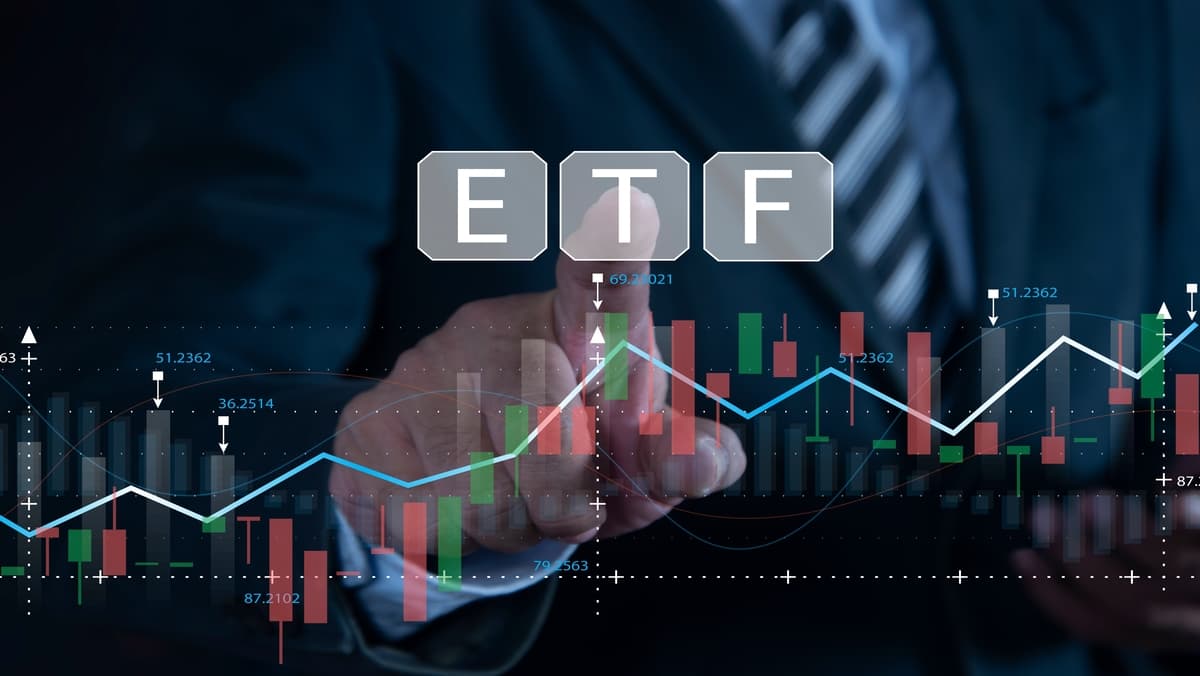Tuesday Sep 24 2024 07:45

6 min

CFDs on Exchange-Traded Funds (ETFs) offer investors significant flexibility, diversification, and cost-efficiency. Unlike mutual funds, ETFs trade continuously during market hours, allowing for real-time adjustments. They provide exposure to a wide range of assets, including stocks and commodities.
While the benefits of trading ETFs include low costs and high liquidity, there are challenges such as limited diversification and the potential for emotional trading. This guide aims to equip traders with effective strategies for navigating CFD ETF trading, from building diversified portfolios to advanced hedging techniques, ultimately enhancing investment results.
ETFs are versatile investment vehicles designed to track a range of assets, from single commodities to diverse portfolios and specific investment strategies. The SPDR S&P 500 ETF (SPY), created to mirror the S&P 500 Index, remains a popular choice among traders and investors.
Like mutual funds, ETFs must register with the Securities and Exchange Commission (SEC) and become investment companies upon approval. These companies acquire and manage the assets specified in their filings, then securitize them for investors.
Once approved, ETFs are offered at prices set by the issuing company, often with an emphasis on affordability. Investing in an ETF can effectively mean owning a stake in multiple companies without direct ownership transfer, as investors buy shares of the fund, which in turn holds shares of the underlying companies.
In summary, ETFs are dynamic investment tools that combine the accessibility of individual stocks with the diversification typical of mutual funds. Their continuous trading, wide asset coverage, and regulatory framework make them appealing options for investors seeking cost-effective and flexible investment opportunities, making ETF CFDs particularly attractive for beginner traders.

CFDs on exchange-traded funds (ETFs) can be as varied as the ETFs themselves. Let’s break down the different types and their unique characteristics!
1. Stock ETF CFDs
Stock ETF CFDs are based on ETFs that hold a diversified basket of stocks from specific industries or sectors, offering investors broad exposure to various equity market segments. Unlike mutual funds, stock ETFs typically have lower fees and do not require direct ownership of the underlying securities, making them cost-effective investment options.
2. Bond ETF CFDs
Bond ETFs underpin many CFDs and are designed to provide regular income by investing in a diversified mix of bonds, including government, corporate, and municipal bonds. They offer liquidity and diversification advantages over individual bonds, without having a maturity date, and often trade at a premium or discount to their net asset value.
3. Currency ETF CFDs
Currency ETF CFDs are tied to ETFs that track currency pairs, enabling investors to potentially speculate on currency fluctuations or hedge against currency risk. These ETFs are useful for portfolio diversification and mitigating forex market volatility.
4. Commodity ETF CFDs
Commodity ETF CFDs are based on funds that invest in commodities like crude oil, gold, or agricultural products, offering exposure to commodity markets without direct ownership. They provide diversification benefits and can serve as a hedge against inflation or market downturns.
5. Bitcoin ETF CFDs
These CFDs allow investors to gain exposure to Bitcoin ETFs that track the cryptocurrency's price movements without owning Bitcoin directly. Spot Bitcoin ETFs hold the actual cryptocurrency, while futures-based ETFs mimic Bitcoin price changes through futures contracts. However, access to these ETFs may be restricted based on jurisdiction.
For novice CFD ETF traders, building a solid foundation is essential for potential success. A proven CFD ETF Trading strategy is to create a diversified portfolio using CFDs based on broad-market ETFs. These underlying ETFs provide exposure to a wide range of stocks or bonds, helping to mitigate the risks associated with investing in individual securities. Beginners should consider starting with low-cost, passively managed ETFs that offer access to various sectors and asset classes.
Regardless of experience level, it’s vital to regularly review and rebalance an ETF CFD portfolio. Rebalancing involves adjusting investments to maintain target allocations, ensuring the portfolio aligns with investment goals and risk tolerance.
A practical approach for traders is to rebalance their portfolio when certain asset classes move beyond predetermined thresholds. This strategy allows traders to sell CFDs on high-performing assets and buy those based on underperforming ones, promoting a disciplined investment methodology.
In summary, CFDs on Exchange-Traded Funds (ETFs) are versatile investment tools that combine the accessibility of individual stocks with the diversified nature of mutual funds. They offer significant flexibility and diversification, providing investors with exposure to a broad range of assets, including stocks and cryptocurrencies.
While the underlying ETFs present various benefits, such as liquidity and adaptability, traders should be mindful of challenges like limited diversification and the emotional aspects of trading, as well as the inherent risks associated with CFD trading. This guide empowers traders to build diversified portfolios and implement advanced hedging strategies, equipping them with the knowledge needed to optimize their CFD ETF trading and potentially improve their trading outcomes.
When considering shares, indices, forex (foreign exchange) and commodities for trading and price predictions, remember that trading CFDs involves a significant degree of risk and could result in capital loss.
Past performance is not indicative of any future results. This information is provided for informative purposes only and should not be construed to be investment advice.Trading cryptocurrency CFDs and spreadbets is restricted for all UK retail clients